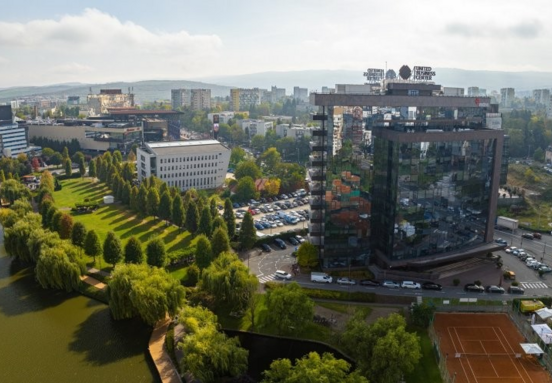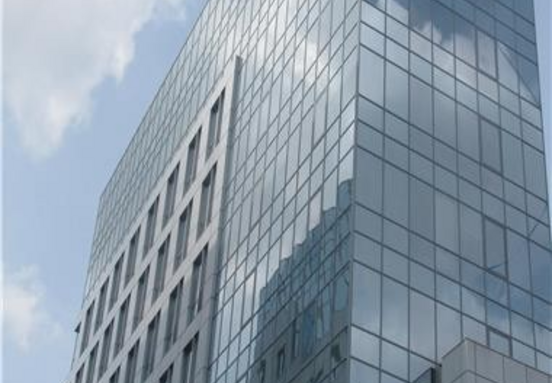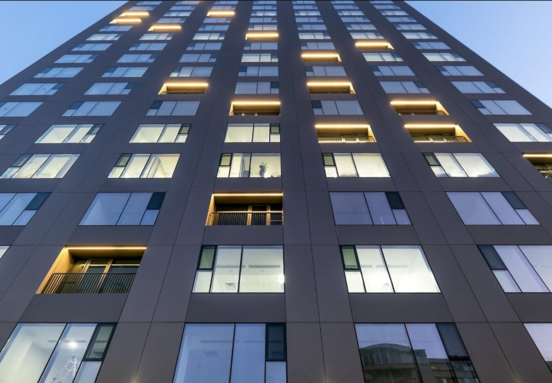Demand for office space outside Bucharest increased by 140 percent in 2014 against the previous year and in 2015 it is projected to exceed last year’s record level, Mihaela Galatanu, research specialist at DTZ Echinox, told BR.
Actual take-up stood at some 37,000 sqm, out of which net take-up represented 68 percent, or about 25,000 sqm, Andrei Drosu, research consultant at JLL Romania, told BR. According to Esop data, the 37,000 sqm of office space leased last year outside the capital was up by 60 percent y-o-y and seven times more than the 2012 level.
Companies such as Siemens, Genpact, Yardi, 3Pillar Global, National Instruments, Endava, GSK, Accenture, Continental and GfK are among the main players that have leased office space outside Bucharest. Timisoara, Cluj-Napoca and Iasi maintained their status as the main regional office markets in 2014 in terms of both existing stock and demand, but there is increasing interest in so-called tertiary cities such as Brasov, Targu Mures and Ploiesti, say pundits.
Demand for office space outside Bucharest is projected to reach a new record in 2015 and IT and outsourcing companies will remain the main engines behind this growth, say consultants.
“In 2015 we’re seeing that the interest of IT, BPOs and service outsourcing companies in Romania is posting stronger growth than last year. Once every two weeks a new name probes the market; even more often than that we present case studies on Romania, the structure and talent of the local workforce. We estimate that over 20,000 sqm of office space will be leased this year by incoming companies, both in Bucharest and around the country,” Andreea Paun, associate director, office agency, at Colliers Romania, told BR, adding that most of these deals will be closed in the second half of 2015.
Besides these well established players, the pick-up in industrial activity has led to companies active in sectors such as automotive manufacturing and energy leasing office space close to their regional operation centers, noted Drosu. This trend too is expected to continue in 2015.
And it is not only newcomers and expanding tenants that are fueling this demand. Relocations from class C or class B office projects to more modern and energy-efficient class A projects are also contributing to the market’s growth.
“At present, many of our clients are considering consolidation, opening new offices or relocating from class B office buildings, which they used to test the potential of the local market, to class A projects. This is a natural evolution once the market has proved to be sustainable for them on the long run,” Mihai Paduroiu, head of the office agency at CBRE Romania, told BR.
Also, as class C office stock is quite extensive in several regional cities, many tenants are opting for relocations to class A office buildings in order to optimize space and occupancy costs, added Galatanu.
And as this overall demand for office space goes up, developers are investing in meeting tenants’ specifications. According to consultants, between 80,000 and 130,000 sqm of office space will be delivered outside Bucharest this year, more than double the level reported last year and a stock similar to that estimated to be completed in the capital. Some of the biggest office projects to be delivered this year include the second phases of The Office and Liberty Technology Park in Cluj-Napoca, the fifth building of City Business Centre and Optica Business Park 2 in Timisoara, UBC 5, Ideo 2 and Moldova Center in Iasi.
While last year the highest volume of new office space was delivered in Cluj-Napoca, this year Iasi, in eastern Romania, is in the leading position with a volume of 43,000 sqm, according to DTZ Echinox data. The western cities of Cluj-Napoca and Timisora are in second and third positions.
A trend that persists, however, is that just like in recent years, most projects scheduled for completion in 2015 are speculative developments, meaning they haven’t secured a significant pre-lease before starting works. Demand, however, is high enough for developers to take calculated risks and previous years prove that speculative developments are a market characteristic. “Analysis of transactions signed over the past five years shows that more than 65 percent involved existing buildings. Therefore, as long as companies prefer to lease space in completed office buildings, we will continue to talk about speculative developments,” said Daniela Popescu, head of research at Colliers Romania.
Romanian businessman Ovidiu Sandor is behind two of the biggest office blocks to be delivered in 2015 outside Bucharest. After investing EUR 26 million with New Europe Property Investments (NEPI) in 2014 in the first phase (19,000 sqm of GLA) of The Office, a class A project located in downtown Cluj-Napoca, they will open the project’s second phase (18,000 sqm GLA) in December.
The businessman is also the developer of the City Business Centre office project in Timisoara (43,000 sqm GLA) which he sold to NEPI in early 2012 for an estimated EUR 90 million and which will open its fifth and last building (9,000 sqm GLA) this year.
“The first building of The Office, which was delivered at the end of March last year, is over 90 percent occupied and we estimate that at this point at least a third of the second phase will be leased by companies with which we have already signed contracts for the first building as part of their expansion process. We have signed contracts with over 18 companies, many of which are active in IT, BPO and services,” Sandor told BR. Tenants include 3Pillar Global Romania, Bosch, Yardi, National Instruments, COS and TUI.
In the last building of City Business Centre in Timisoara, tenants have a similar profile – mostly IT and BPO companies expanding their existing offices. One thing is for sure, says the businessman, IT is the most effervescent industry at the moment.
“We have IT tenants, for example 3Pillar Global which has offices in both projects and which this year is expanding its operations and will increase its number of employees by 35-30 percent. Being flexible about our tenants’ expansion possibilities was a key principle when we came up with the concept for the two office projects,” he added.
A well trained workforce and lower wages than in Bucharest have been and will continue to be one of the main competitive advantages of university cities like Timisoara, Cluj-Napoca and Iasi in attracting IT players and outsourcing companies. But for how long will this continue to fuel the country’s regional office market at growth rates similar to the ones posted so far?
Just as Bucharest competes against other CEE capitals, the country’s main regional cities compete in their turn against regional cities in Poland and the Czech Republic in attracting such investors, believes Galatanu. “As long as cities in Romania remain competitive in terms of labor and occupancy costs, they will continue to attract the interest of companies looking to open an office in the region,” she said.
Talking about potential new investments in the office segment, Sandor says that although the office projects he is involved in in Timisoara and Cluj-Napoca post occupancy rates of 98 percent and over 90 percent, respectively, these cities’ limited workforce has become an issue. The IT industry in particular is experiencing this, he believes. “There is room for new projects, but the potential is not unlimited,” concluded the businessman.
On the short and medium run, the supply and demand for office space in the main cities outside Bucharest is balanced. However, the market’s development on the long run depends on the workforce and the infrastructure these cities offer investors, said Paduroiu. “In cities where the unemployment rate is almost zero, it is becoming increasingly hard to find workers,” he commented, adding that one solution would be to encourage commuting between regional poles and smaller towns within a radius of 50 km. (Source: business-review.eu)






